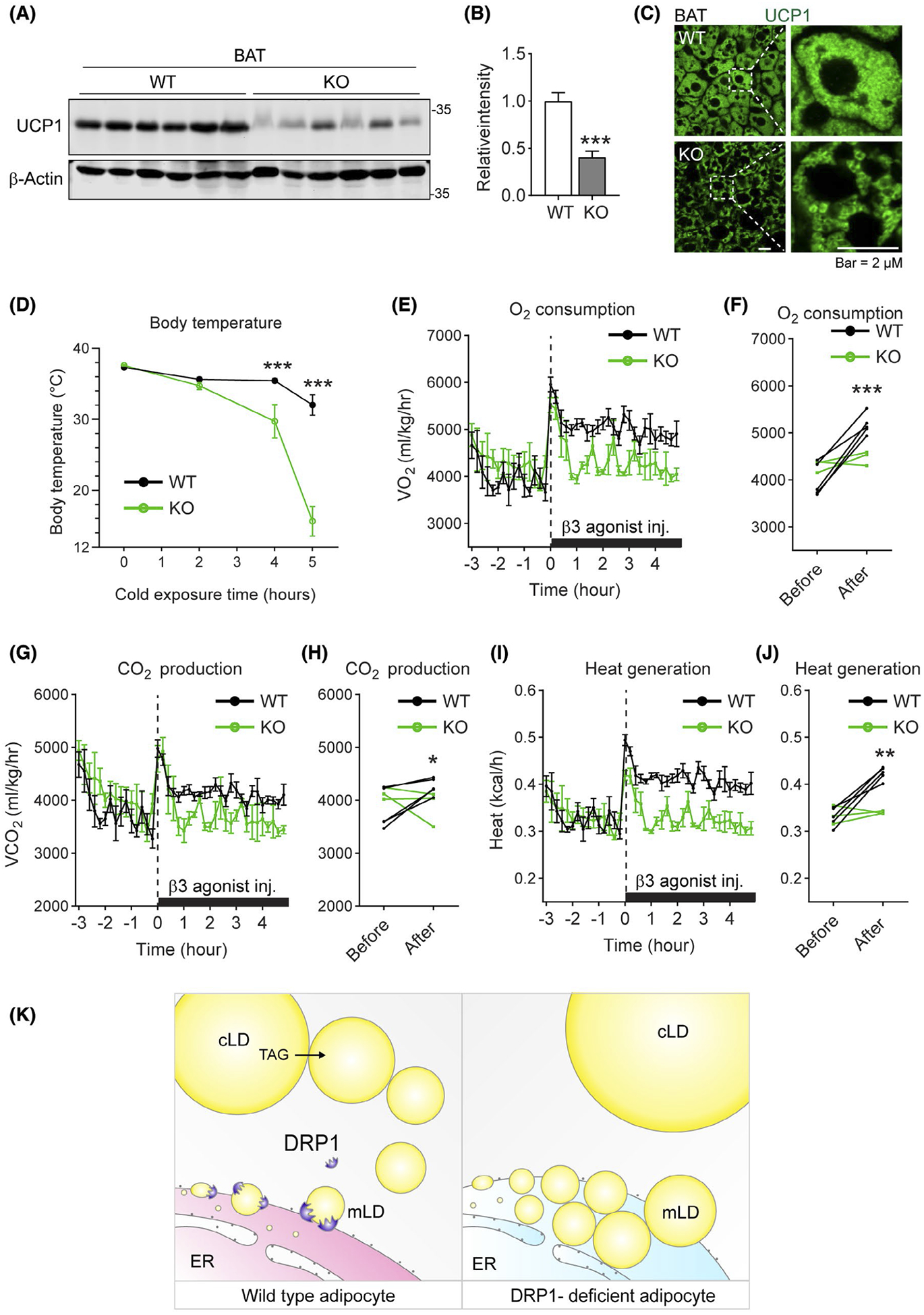FIGURE 7.

Adipose tissue-specific deletion of DRP1 leads to impaired thermogenesis and decreased energy expenditure. A, Western blotting (WB) analysis of UCP1 protein levels the BAT of Adipo-Drp1flx/flx mice and their littermate controls after cold exposure. B, Quantification of relative band intensity (normalized to β-Actin) in (A) (n = 6 per group, representative of three trials. The data are represented as mean ± SEM, Student’s t test, ***P < .001). C, IF staining with anti-UCP1 antibody in the BAT from Adipo-Drp1flx/flx mice and their littermate controls after cold exposure (Representative of three trials are shown). D, Body temperature of Adipo-Drp1flx/flx mice and their littermate controls during cold exposure at 6°C (n = 12 per group, data are represented as mean ± SEM, Student’s t test, ***P < .001). E, O2 consumption for indirect calorimetry analysis of Adipo-Drp1flx/flx mice and their littermate controls upon treatment of β3 agonist CL-316,243 (n = 3~5 per group, data are represented as mean ± SEM). F, The average of 3-hour O2 consumption before and after CL-316,243 treatment for each mouse is shown (n = 3~5, Student’s t test, ***P < .001). G, CO2 production for indirect calorimetry analysis of Adipo-Drp1flx/flx mice and their littermate controls upon treatment of β3 agonist CL-316,243 (n = 3~5 per group, data are represented as mean ± SEM). H, The average of 3-hour CO2 production before and after CL-316,243 treatment for each mouse is shown (n = 3~5, Student’s t test, *P < .05). I, Heat generation for indirect calorimetry analysis of Adipo-Drp1flx/flx mice and their littermate controls upon treatment of β3 agonist CL-316,243 (n = 3~5 per group, data are represented as mean ± SEM). J, The average of 3-hour heat generation before and after CL-316,243 treatment for each mouse is shown (n = 3~5, Student’s t test, **P < .01). K, Working model: based on the results, we propose the following working model: DRP1 may target ER-LD interface and facilitate the micro-LD dissociation from ER (left). The new LDs may physically contact the preexisting cytosolic LDs and share the neutral lipids with them. Deficiency of DRP1 in adipose tissue blocks proper dissociation of nascent micro-LDs from ER, which further causes abnormal accumulation of LDs in ER and hence ER stress. In the cytoplasm, due to lack of new small LDs, the preexisting LDs accumulate more neutral lipids, which eventually leads to larger unilocular LDs (right). cLD: cytosolic lipid droplet; mLD: micro lipid droplet. TAG: triacylglycerol
